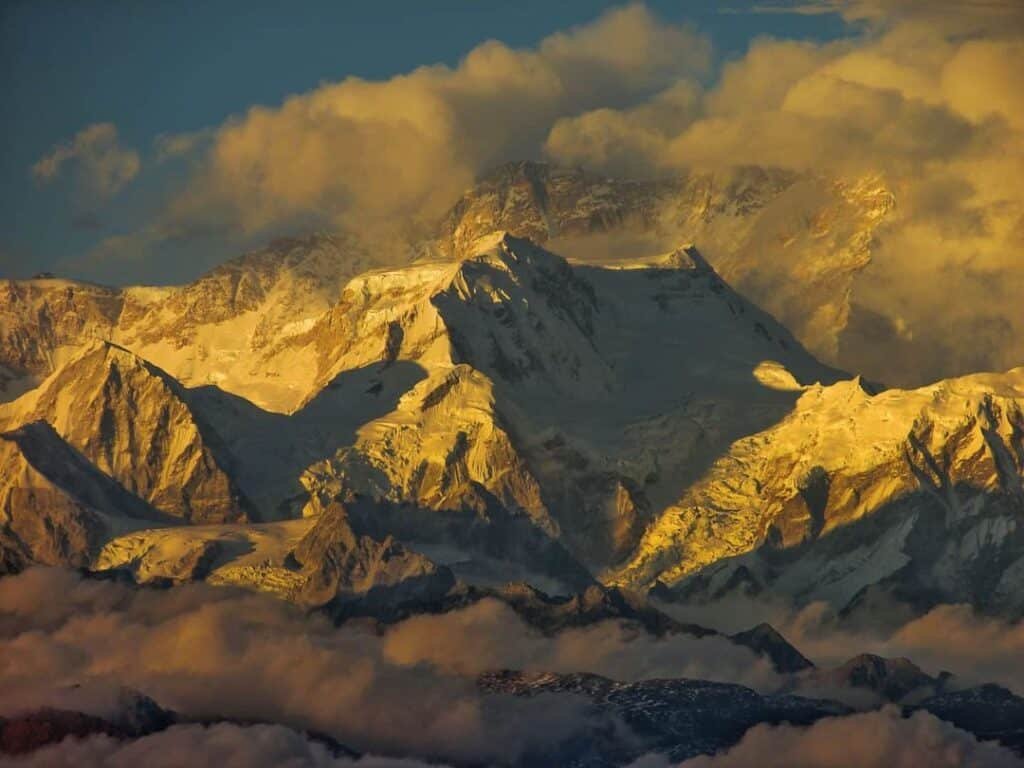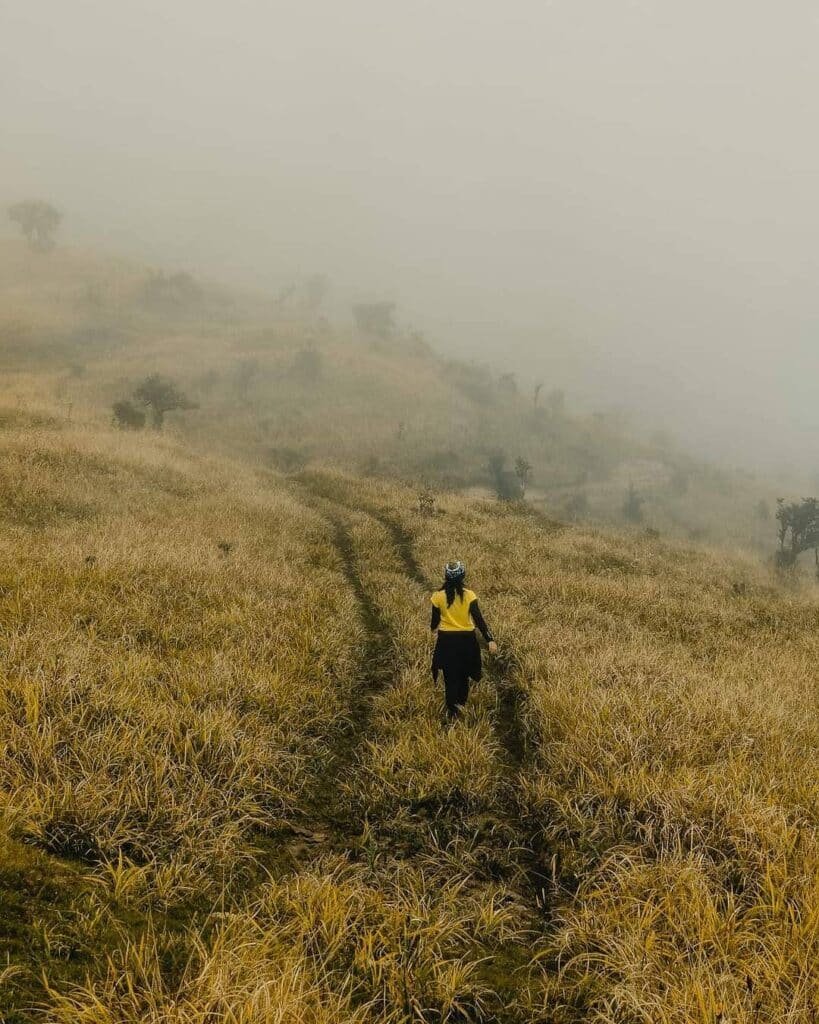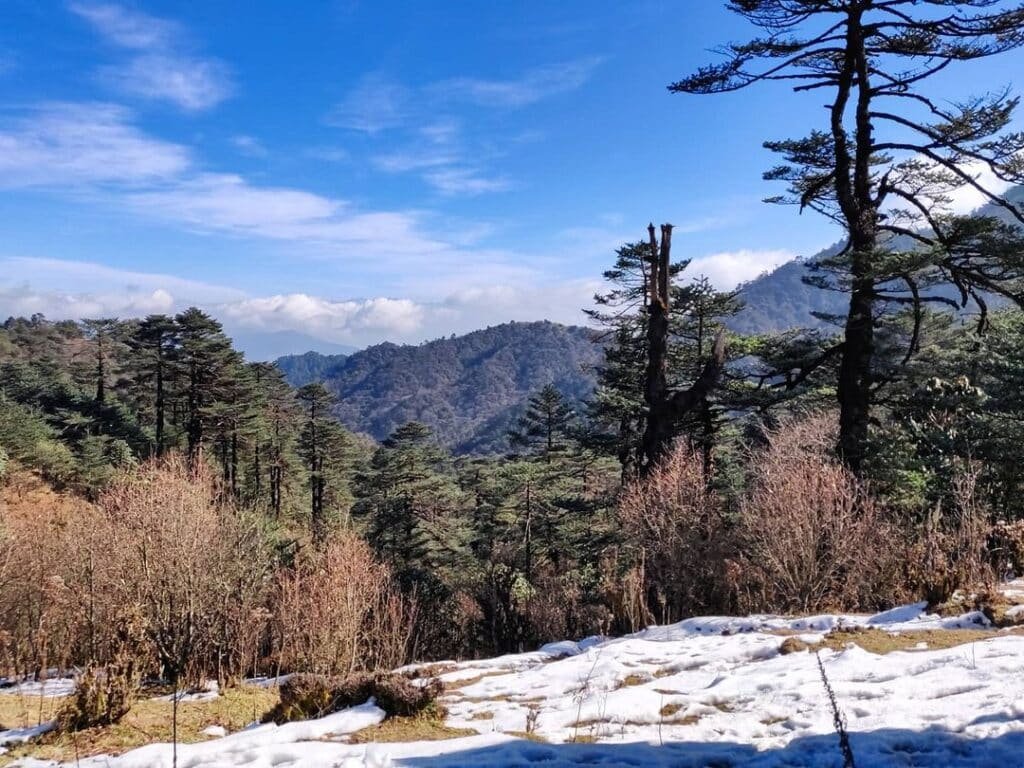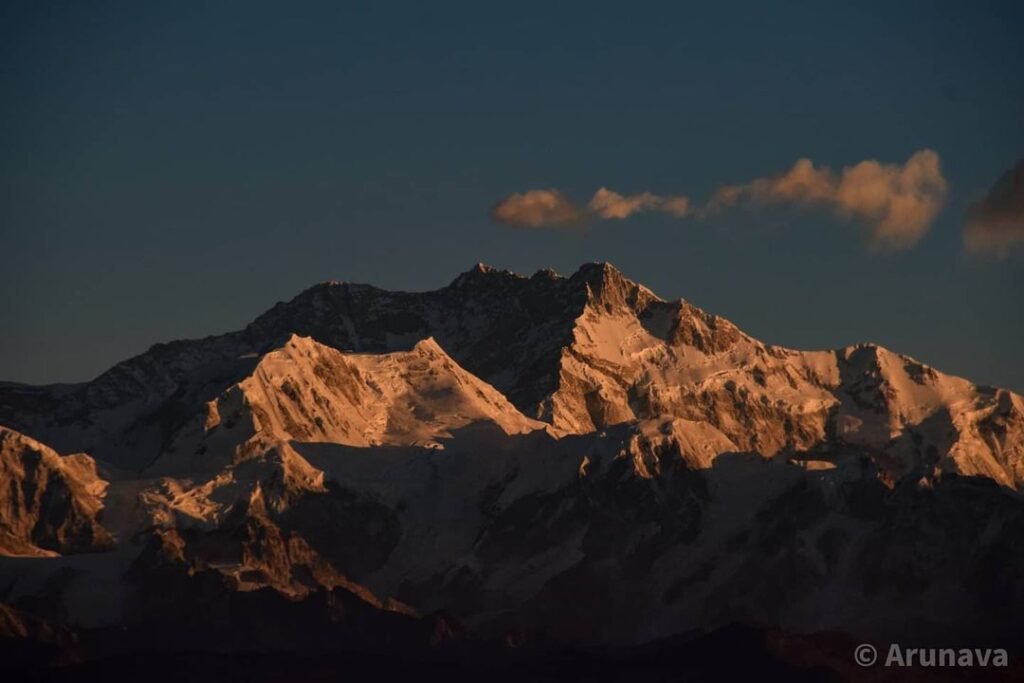Sandakphu Trek: A Comprehensive Guide (2024)
- Trekking Destinations
-
Jul 11
- Share post
Our comprehensive guide on the Sandakphu Trek is just for you! Known as the ‘Trekkers Wonderland’, this trek is a dream come true for many, and we’re here to provide you with all the details you need to make this dream a reality.
From the challenges you’ll face and the mesmerising sights you’ll behold to the practicalities of costs, gear, and travel arrangements, we’ve got you covered.
Our guide is brimming with firsthand insights, tips, and a detailed itinerary to help you plan this exhilarating journey. So, tighten your shoelaces, and prepare to embark on an unforgettable adventure through the pages of our Sandakphu Trek guide. Let the journey begin!
- Max Altitude: 11,930 Ft. (3,636M)
- Average Trekking Fees: ₹9,000 - ₹13,000
- Distance: 55 – 65 kms
- Difficulty: Moderate
- Duration: 6-7 days
- Ideal For: Experienced Trekkers & Fit Individuals
- Best Season: April-May and October-early-December
- Region: West Bengal
Table of Contents
ToggleSandakphu Trek: An Overview

Sandakphu Trek, situated in West Bengal’s Darjeeling district, offers a remarkable adventure as it’s the tallest peak in the region, standing at 3636 meters (11,930 ft). This trek presents a unique opportunity to take a 360-degree panoramic view of four of the world’s tallest peaks – Everest, Kanchenjunga, Makalu, and Lhotse.
Starting from the quaint village of Sepi, near Darjeeling, the route takes you along the Singalila Ridge that straddles the border of Nepal. Trekkers traverse serene rhododendron forests and tranquil villages such as Gairibas and Kalapokhari. Phalut, West Bengal’s second-highest peak, also features on this trek.
The dawn panorama from Sandakphu Peak is an unrivalled attraction, where the majestic Himalayan ranges are revealed in the soft morning light. This trek, of moderate difficulty, typically takes about 6-7 days to complete.
The best times to undertake the Sandakphu Trek are from April to May, when rhododendron and magnolia are in full bloom, and from October to early December, for unobstructed views of the Himalayan peaks. Trekkers must equip themselves with the right gear and attire for sub-zero temperatures and maintain adequate physical fitness.
Sandakphu Trek Duration & Difficulty Level

The Sandakphu Trek, encompassing a distance of around 55-65 km, poses moderate difficulty. While the trek is manageable for most, it does have its challenging aspects that amplify its difficulty level. Trekking typically spans 6-7 days, demanding significant physical endurance and stamina.
Daily, trekkers traverse approximately 11-13 km, which can take anywhere between 6-8 hours of trekking. The path includes steep ascents and uneven terrain, presenting a substantial challenge to new and seasoned trekkers.
As far as the fitness requirements are concerned, potential trekkers should be in good physical condition. Regular cardiovascular exercise (running or cycling) is strongly recommended for a few weeks before the trek. The trek is quite demanding. Thus, strength and endurance training, particularly exercises focusing on the legs, would be beneficial. The high altitude can also lead to breathing difficulties for some. Therefore, prior high-altitude training or experience would be a valuable asset.
It’s essential to remember that each person’s capabilities are different. What might be moderate for some could be difficult for others. Therefore, adequate preparation and fitness assessment are essential to successfully completing the Sandakphu Trek.
Best Season for the Sandakphu Trek

The Sandakphu Trek is open in two main seasons: spring and autumn. Each season has its own unique qualities and also a few challenges.
Spring (April to May) is when the mountains burst into life. Beautiful flowers like rhododendrons and magnolias bloom all around, making the paths colourful and vibrant. It’s like walking in a painting! During this time, the average temperature is around 8-12 degrees Celsius during the day. But it can fall below zero at night, so warm clothes are necessary. The big plus point of trekking in spring is seeing all the lovely flowers. The downside? Sometimes, the skies can be cloudy, and that might hide the mountain peaks from view.
On the other hand, Autumn (October to early December) is famous for its clear skies. You can see the Himalayan peaks in all their glory. It’s also a great time to watch the sunrise from Sandakphu Peak. The average temperature is around 6-10 degrees Celsius during the day and can even drop to minus 6 degrees at night. So, warm clothes are still necessary. The main plus point of trekking in autumn is the chance to see clear, stunning views of the mountains. The downside? There are no blooming flowers, so the paths might not be as colourful as in spring.
Both seasons have their own charm. It depends on what you like – colourful flowers or clear mountain views. Either way, the Sandakphu Trek is a beautiful adventure!
Budget & Costing

Planning for the Sandakphu Trek involves careful consideration of the budget.
The average trekking fees charged by most trekking organisations in India range from ₹9,000 – ₹13,000. This typically includes the cost of guidance, accommodation, and food for the duration of the trek.
One of the significant costs to consider is transportation to Sepi, the starting point of the trek. The cost here can vary depending on your location and the mode of transport. Flights are the fastest but also the most expensive. Trains and buses are more economical alternatives but take longer.
Even though the trekking fees include accommodation, it’s essential to consider any hotel costs before and after the trek. It’s standard for trekkers to arrive a day before the trek starts or leave a day after it ends.
Another cost to consider is the equipment and gear required for the trek. Trekking gear can be expensive, especially if you’re new to trekking. A cost-effective option is to rent gear from various trekking rental services available. This can significantly reduce the cost of the trek.
While food and water are generally provided during the trek as part of the fees, carrying extra snacks or energy bars is a good idea. These might add a little extra to your budget, but they are handy when you need an energy boost.
Lastly, there might be miscellaneous expenses, such as medicines, personal toiletries, or charges for additional activities or services during the trek. It’s always wise to have some extra money set aside for these.
Considering these factors, you can effectively budget for your Sandakphu Trek and ensure a smooth and memorable experience.
How To Reach?

By Flight
For those considering air travel, the nearest airport is Bagdogra Airport, about 170 km from Sepi. Major Indian cities like Delhi, Mumbai, and Kolkata have regular flights to Bagdogra. One can hire a taxi from Bagdogra to reach Sepi, which is about a 6-hour drive. Although this is the fastest way to reach Sepi, it may also be expensive.
By Train
Train travel is a more cost-effective option. The nearest major railway station to Sepi is New Jalpaiguri Junction (NJP). There are many trains from major Indian cities to NJP. Upon reaching NJP, one can opt for a taxi to Sepi, which takes about 5-6 hours. Alternatively, trekking organisations usually arrange pick-up and drop-off services from NJP station, making it a convenient option.
By Bus
For those looking for the most economical option, bus services are available. Regular buses operate from Siliguri to Darjeeling; one can get off at Ghoom. From Ghoom, shared jeeps are available to Sepi. The total journey may take about 8-9 hours. However, given the number of changes, this could be the longest and the least comfortable journey.
In conclusion, the best option for most people might be the train. It’s relatively economical and comfortable. Plus, the convenience of pick-up and drop-off services from NJP arranged by trek organisations makes it a clear winner. However, the bus service is the cheapest option, despite the longer journey time and less comfort. Ultimately, the choice depends on budget, comfort preference, and time constraints.
Sandakphu Trek: Detailed Itinerary

Here’s a detailed itinerary for the Sandakphu trek:
Day 1: Arrival at Sepi: Start your journey at Sepi. You’ll be given a brief about the entire trek and the precautions to take. Spend the day acclimatising and preparing for the trek ahead.
Day 2: Sepi to Tumling:
- Trek Distance: 11 km. Approx.
- Trek Time: 6 hours.
Start your trek towards Tumling. This trek will take you through beautiful forests and mountain hamlets. The key highlight of the day would be your first glimpse of the majestic Kanchenjunga range. Overnight stay at Tumling.
Day 3: Tumling to Kalapokhari:
- Trek Distance: 13 km. Approx.
- Trek Time: 7 hours.
Today, you’ll trek from Tumling to Kalapokhari. It’s a steep climb through bamboo meadows and rhododendron forests. The day’s highlight would be reaching Kalapokhari (the black pond), a significant landmark.
Day 4: Kalapokhari to Sandakphu:
- Trek Distance: 6 km. Approx.
- Trek Time: 3-4 hours.
The destination is Sandakphu today. It’s a short but steep climb. The reward at the end is the amazing 360-degree view of the four tallest mountains in the world. Overnight stay at Sandakphu.
Day 5: Sandakphu to Phalut:
- Trek Distance: 21 km. Approx.
- Trek Time: 9 hours.
This is the longest trek day, from Sandakphu to Phalut. It’s a long journey but filled with panoramic views of the Himalayas. Overnight stay at Phalut.
Day 6: Phalut to Gorkhey
- Trek Distance: 15 km. Approx.
- Trek Time: 5 hours.
Start your descent from Phalut to Gorkhey. This path takes you through a dense forest of chestnut, pines, hemlock, and more. Gorkhey is a beautiful hamlet situated right in the middle of a forest. Overnight at Gorkhey.
Day 7: Gorkhey to Sepi and Departure
- Trek Distance: 11 km. Approx.
- Trek Time: 5 hours.
On the last day of the trek, you descend further to Sepi. This marks the end of the Sandakphu trek. From Sepi, you can proceed with your onward journey.
This itinerary includes varied landscapes, challenging terrains, and breathtaking views making the Sandakphu trek a memorable experience.
Highlights of the Sandakphu Trek

- The highest Peak of West Bengal is Sandakphu, standing at an impressive 3,636 meters (11,930 feet) and is the highest peak in West Bengal. Trekking to the top is a fantastic achievement.
- Four of the Five Highest Peaks: From Sandakphu, you get a unique opportunity to see four of the world’s five highest peaks – Everest, Kanchenjunga, Lhotse, and Makalu – all in a single panoramic view.
- Journey through Singalila National Park: The trail passes through the Singalila National Park, offering trekkers a chance to experience a rich biodiversity, including red pandas and Himalayan black bears.
- Flora and Fauna: The trek is especially delightful when rhododendrons and magnolias bloom in spring. The vibrant hues make the trek picturesque and memorable.
- Sunrise from Sandakphu: The breathtaking view of the sunrise from the Sandakphu peak highlights the trek. The sight of golden rays illuminating the snow-covered peaks is unforgettable.
- Cultural Experience: The trek allows you to experience the region’s culture. You’ll pass through several small villages and interact with the locals, providing a glimpse into their daily lives and traditions.
- Phalut Viewpoint: The trek also includes a stop at Phalut, the second-highest peak of West Bengal. The view of the mountains from Phalut is equally impressive.
- Physically Challenging and Rewarding: The trek is moderately difficult, making it a perfect choice for both beginners looking for a challenge and experienced trekkers seeking a new adventure.
- Trekking through Different Terrains: The trail provides a wide range of landscapes, from thick forests to rocky terrains, to keep the journey interesting and challenging.
- Serene Environment: Far from the noise and rush of city life, the Sandakphu trek offers peace and tranquillity. The beauty and serenity of the surroundings provide a refreshing break.
All these highlights make the Sandakphu trek a unique and remarkable experience for any trekking enthusiast.
Safety Tips & Precautions
While embarking on any trek, safety should always be a top priority. Here are some essential safety tips to keep in mind during the Sandakphu Trek:
- Trek with an experienced guide and follow their instructions.
- Stay hydrated and carry an adequate supply of water.
- Pack light and carry only the essential items.
- Dress in layers to adapt to changing weather conditions.
- Respect the environment and maintain cleanliness.
- Inform someone about your trekking plans and expected return.
- Stay updated about weather conditions and local regulations.
- Avoid alcohol and smoking during the trek.
Essential Gear and Equipment for Sandakphu Trek
Before embarking on the trek, it is essential to pack the right gear and equipment to ensure a safe and comfortable journey. Here is a list of items you should consider carrying:
- Trekking shoes with good ankle support
- Backpack with rain cover
- Trekking gaiters
- Warm and waterproof clothing layers
- Sleeping bag suitable for sub-zero temperatures
- Trekking poles for better stability on uneven terrains
- UV-protected sunglasses and sunscreen
- Water bottles and water purification tablets
- Headlamp or flashlight with extra batteries
- First aid kit with essential medications
- Portable power bank for charging electronic devices
Conclusion
As we conclude our comprehensive guide on the Sandakphu Trek, we hope you’ve found the details insightful and engaging. This trek is a testament to the alluring beauty of nature and a beacon for those seeking to challenge themselves amidst such grandeur.
Every detail in our guide aims to prepare you for the breathtaking and rewarding journey that awaits. Remember, it’s not just about the destination but the experiences and memories you gather along the way.
We hope our guide aids you in making this trek a lifetime experience.
Happy trekking, and let the mountains call you home!
FAQs
The Sandakphu trek is considered moderately difficult. It involves steep climbs and long distances, and trekkers must deal with high-altitude conditions.
The trek to Sandakphu typically takes about 7-8 days. This includes acclimatisation, trekking, and return journey.
The best months for the Sandakphu trek are April-May and October-early-December. The former is known for blooming rhododendrons and magnolias, while the latter offers clear views of the Himalayan peaks.
Yes, the Sandakphu trek can be attempted by beginners who are physically fit and have good stamina. However, it’s always recommended to prepare with some fitness training beforehand to handle the demands of the trek.
Comments
Add a comment
Leave a Reply · Cancel reply
This site uses Akismet to reduce spam. Learn how your comment data is processed.
